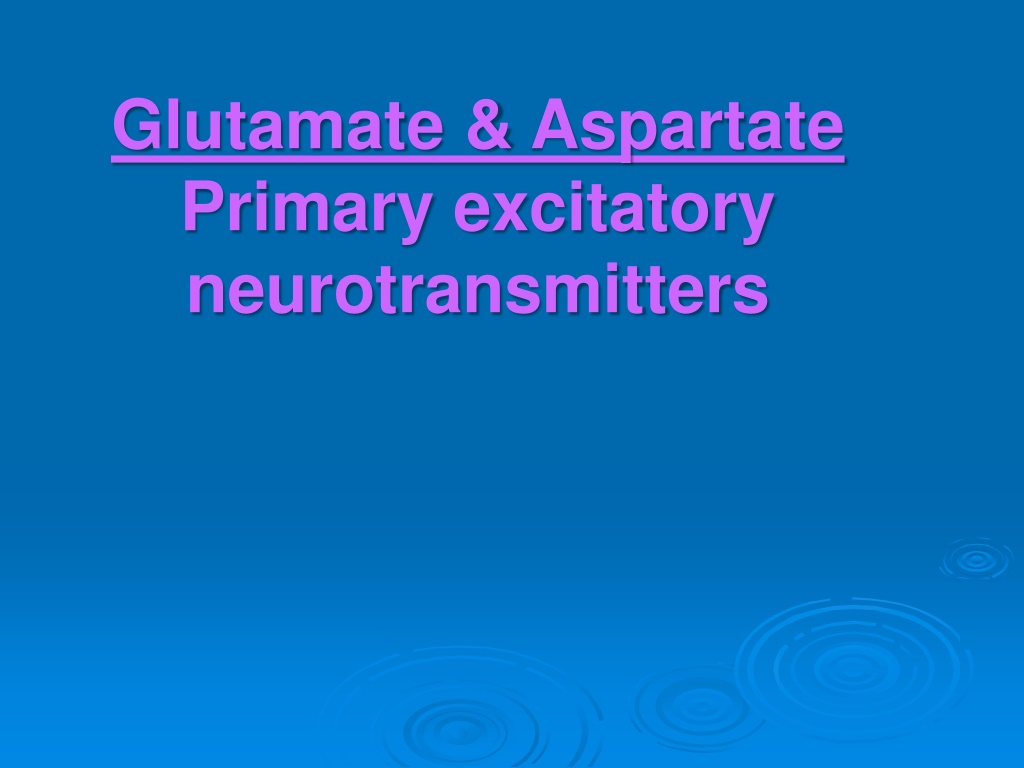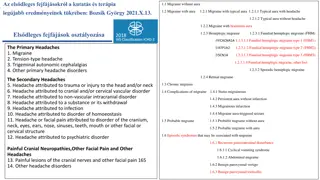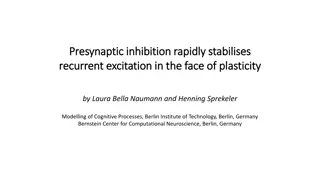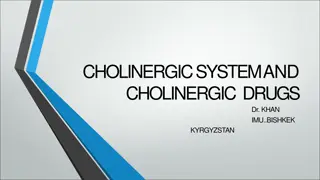Understanding Glutamate: The Primary Excitatory Neurotransmitter
Glutamate and aspartate are primary excitatory neurotransmitters in the CNS, playing crucial roles in neural function. Glutamate is involved in various pathways, including synthesis, metabolism, and receptor interactions, impacting learning, memory, and excitotoxicity. Glutamate receptors, such as NMDA, AMPA, and metabotropic receptors, play pivotal roles in neural signaling and synaptic plasticity. Understanding the complex functions of glutamate is essential for comprehending brain function and neurological disorders.
Download Presentation

Please find below an Image/Link to download the presentation.
The content on the website is provided AS IS for your information and personal use only. It may not be sold, licensed, or shared on other websites without obtaining consent from the author. Download presentation by click this link. If you encounter any issues during the download, it is possible that the publisher has removed the file from their server.
E N D
Presentation Transcript
Glutamate & Aspartate Primary excitatory neurotransmitters
Glutamate tracts Present in corticostrital pathway and in cerebellar granule cells
Glutamate synthesis glutaminase Glutamine+H2O+ATP Glutamate +ADP+ NH4+ PO4 Glutamate metabolism Glutamate dehydrogenase Glutamate Glutamine Glutamate pathway found in hippocampus then projected into pyramidal cells and cerebral cortex
Glutamate Principle excitatory neurotransmitter in CNS Too much glutamate Excessive Ca2+entry through NMDA receptors Stroke, degenerative disease excitotoxicity Two types of glutamate receptors: 1. Ionotropic AMPA NMDA 2. Metabotropic Involved in learning & memory
Glutamate Receptors Glutamate interactswith fourreceptortypes NMDA receptor controlsaCA++channel Activation by glutamine requires glycine binding anddisplacement ofmagnesiumions AMPA receptor ( -amino-3-hydroxy-5-methyl- 4-isoxazolepropionic acid receptor): controls sodiumchannels Kainatereceptor: controlssodiumchannels Metabotropic glutamatereceptor (N-methyl-D-aspartate):
AMPA & Kainate receptors: Ligand gated ion channels allow influx of Na Fast EPSPs G-protein linked receptor (Metabotropic receptor): Linked to phosphotidyl inositol hydrolysis (Memory function)
NMDA Receptors Ligand gated ion channels and allow influx of Ca and Na (N-Methyl D-Aspartate ) Slow EPSPs Blocked by Mg After depolarization Mg leaves receptor allowing influx of Ca &Na
NMDA receptors
NMDA Receptors processes: Long term potentiation phenomenon of neuron in hippocampus (memory,learning) Neurotoxicity and cell death caused by (ischemia) Kindling phenomenon related to epilepsy in which repeated subthreshold electrical stimulation causes a(seizure )experienced by people who have status epilepticus degenerative diseases such as (Huntington diseases,ischemia,amyotrphic lateral sclerosis)
Clinical Significance AP5 A drug that blocks the glutamate binding site on NMDA receptors and impairs certain forms of learning. PCP (Phencyclidine) A drug that binds with the PCP binding site of the NMDA receptor and serves as an indirect antagonist of glutamate.
Addictive Drugs Molecular Targets Relevant to Addiction Drugs Mu opioid receptor (agonists) Opioids Barbiturates and benzodiazepines Cocaine GABA-A receptors (enhance activation of the cl channel) Cocaine blocks dopamine, serotonin and noradrenaline transporters Amphetamine cause transporter-mediated release; the dopamine transporter (DAT) is the most significant target. Amphetamine NMDA glutamate receptor channel (blocker) Phencyclidine (PCP) Hallucinogens Cannabinoids Nicotine Ethyl alcohol Partial agonist at 5HT2A serotonin receptors CB1 cannabinoid receptor Nicotinic acetylcholine receptor (agonist) Facilitates GABA-A receptor function and inhibits NMDA glutamate receptor unknown Inhalants























